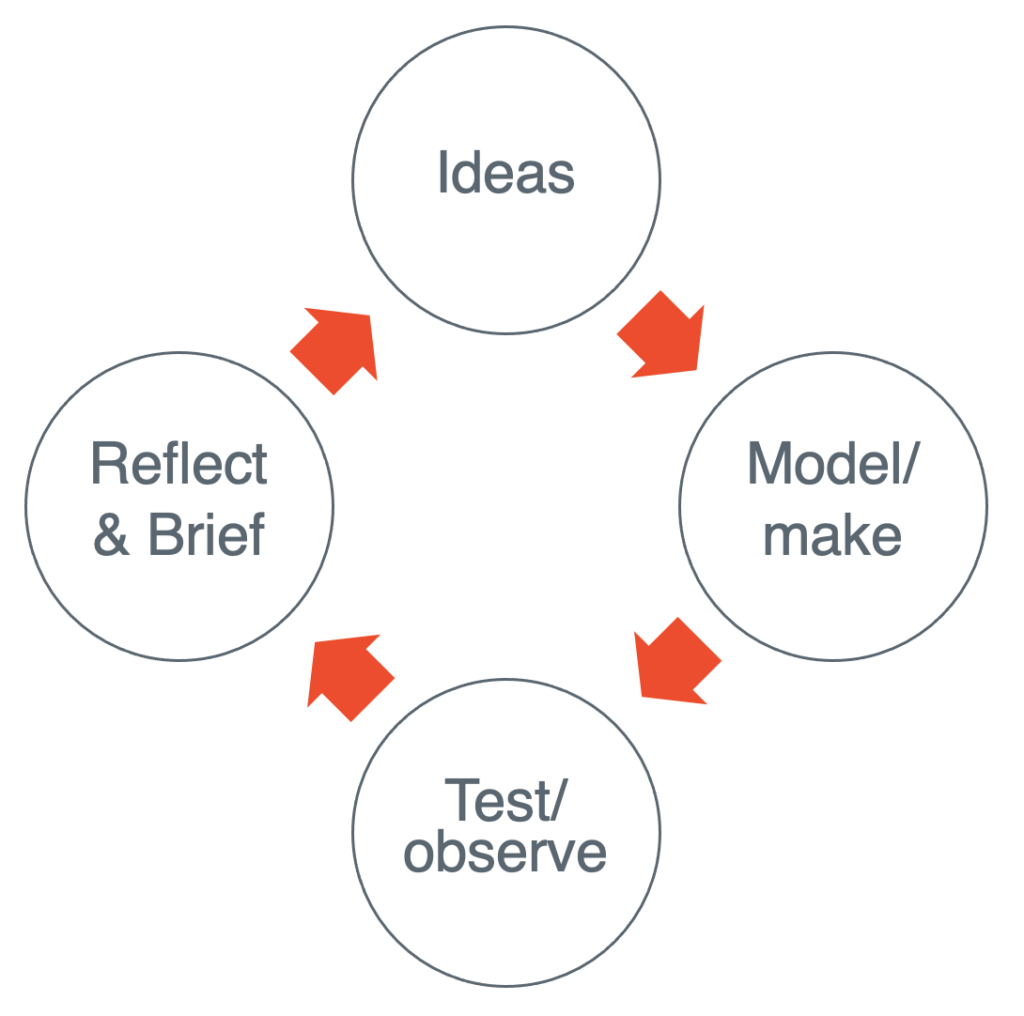I was in Cambridge today to teach my first of four workshops this academic year on the Interdisciplinary Design for the Built Environment Masters programme.
Part of my teaching bookends the course, with a workshop in week on planning for learning and a workshop in the final week on planning for practice. For the rest I feed in models for understanding the design process that students can use in their studio projects.
In this first workshop I introduce my Continuous Design diagram as a common framework for talking about design interventions. The Continuous Design diagram emphasises the continuous cycle of observing, intervening, observing, intervening that we need to do when we are making changes in complex systems.
We use this diagram to help participants design a learning journey for themselves. It is a good way to think about what your learning goals are, how you could achieve them and how you will know you are on track.
I conclude the workshop with an introduction to action learning and I lead participants through the Action Learning Proforma which I developed with Søren Willert a few years ago now.
Continuous Design diagram

This is only the third or fourth time I’ve used the Continuous Design diagram. I see its greatest strength as emphasising the cyclical nature of design, which becomes even more important as we start to think about how to design more regeneratively.
This was a particularly lovely day to be teaching in Cambridge. The morning was fresh. I enjoyed having breakfast in the hall at Selwyn College. By lunchtime things had warmed up and I enjoyed sitting for a few minutes by a tributary of the Cam, watching the clear water babble by.
I am looking forward to returning in December when we will explore what a design brief is in more detail.


Leave a Reply